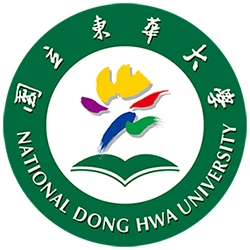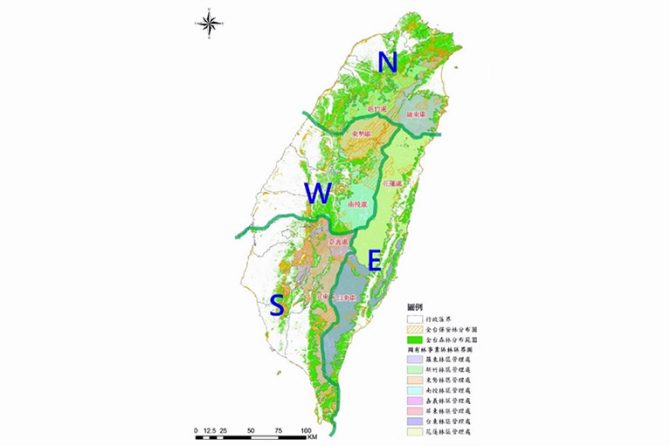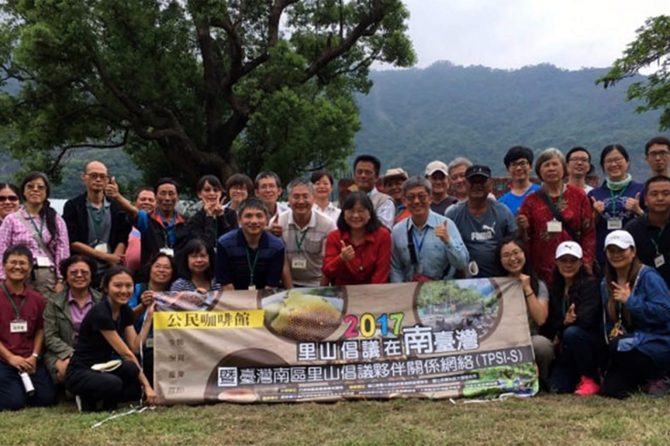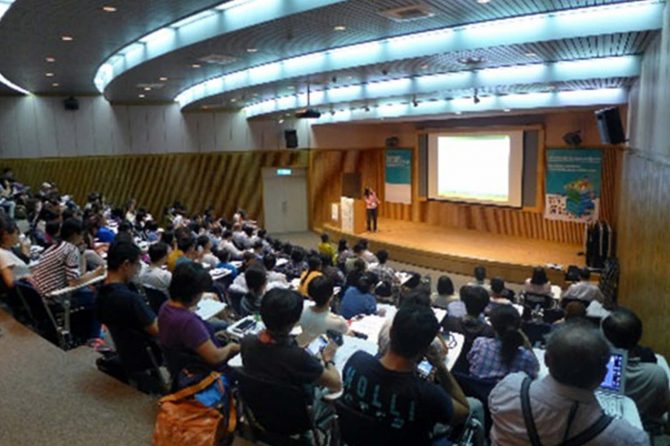2016 CHINESE TAIPEI (TAIWAN)
Facilitating the Development of a Taiwan Partnership for the Satoyama Initiative (TPSI)
National Dong Hwa University (NDHU)
Partnership building
Landscape, Seascape
Overview
Ever since the Satoyama Initiative was introduced to Taiwan in late 2010, it has received a great deal of attention from the government and the public. Engagement for the conservation and revitalisation of socioecological production landscapes (SEPLS) in compliance with the goal of Satoyama Initiative is on the rise. However, a number of challenges in the promotion of the Satoyama Initiative in Taiwan called for a more integrated approach to setting up a national strategic framework for promoting Satoyama Initiative in Taiwan. This collaborative project aimed to develop a national strategic framework for building up the Taiwan Partnership for the Satoyama Initiative (TPSI). The project included five aspects of activities including enhancing international participation and exchange, working on policy research and strategic framework, facilitating knowledge of indicators for monitoring, enhancing capacity building and knowledge exchange through networking regional on-the-ground activities.
Key achievements
- IPSI collaborative activities are one of the key instruments for enhancing mutual learning and cooperation among IPSI members. Among the existing 40 collaborative projects, TPSI is unique since it adopts a national scale and focuses on the partnership among IPSI and non-IPSI members in Taiwan.
- Throughout 2017, the project organised four regional (north, west, south, east) TPSI events, involving 134 participants from 57 different governmental institutions, NGOs/NPOs, academics and community organisations. This helped increase the numbers and diversity of participants considerably as compared to 2016 (see chart below). Public authorities in Taiwan have become more interested in participating in TPSI.
- The project also held the first national-scale TPSI meeting in Taiwan in September 2017. This included a half-day symposium and half-day workshop for ‘TPSI-all 2017’ with 150 participants in the Symposium, and 50 participants in the workshop from different governmental institutions, NGOs/NPOs, community organizations, academic/educational institutions and citizens. This event allowed participants to learn about the origin, process and progress of TPSI development in recent years, as well as to discuss challenges and strategies towards the future.
- A symposium/workshop on IPSI-TPSI Exchange organised under the project in November 2017 allowed representatives of the Satoyama Initiative in Japan, and representatives of TPSI, including the Youth and participants from a similarly diverse background as in the earlier events, to exchange lessons about the recent progress made under both the Satoyama Initiative and TPSI in Taiwan.
- As a follow-up to the project, National Dong-Hwa University continues reviewing and analysing TPSI activities, in order to share its experience of developing a national partnership for the Satoyama Initiative with international IPSI members and other societies.
Lessons
- The exchange between IPSI and TPSI allowed for a better understanding in Taiwan regarding the Satoyama Initiative as a comprehensive concept and approach to reconnecting natural-rural-urban areas and building a symbiotic relationship between rural and urban areas, which conserves the natural areas more effectively.
- This lesson thus contributes to the current efforts of biodiversity conservation in Taiwan, which include setting up a national protected area system especially for conservation of upper-stream high mountain natural areas and individual wetlands. Concepts of the Satoyama Initiative can be incorporated into wider landscape and seascape management through reconnecting upstream and downstream, and forest-stream-village-sea ( in Japanese: 森- 川- 里- 海) linkages between natural, rural and urban areas.
Project location
Organisation

National Dong Hwa University (NDHU)
- Sector
- Academic institute
- Country
- Chinese Taipei (Taiwan)
- Website/SNS
- https://www.ndhu.edu.tw/
Relevant projects
Projects of the same year
Aichi Biodiversity Targets
Aichi Biodiversity Targets
-
Awareness increased
Sustainable Development Goals
Sustainable Development Goals
-
Partnerships for the goals


